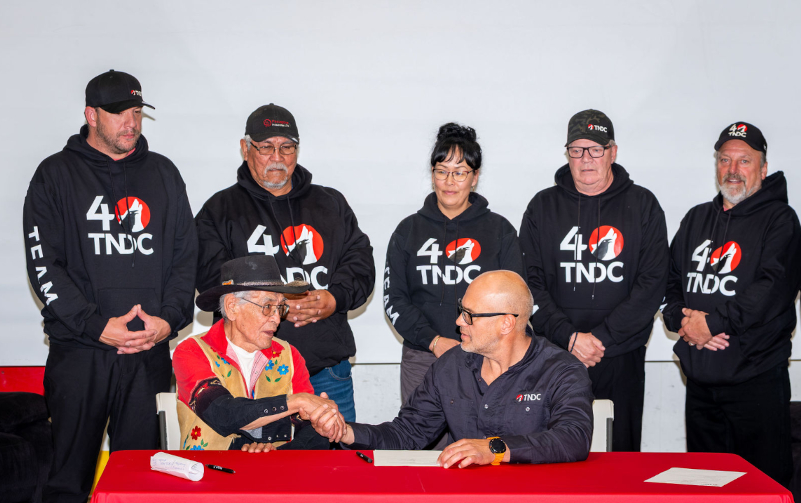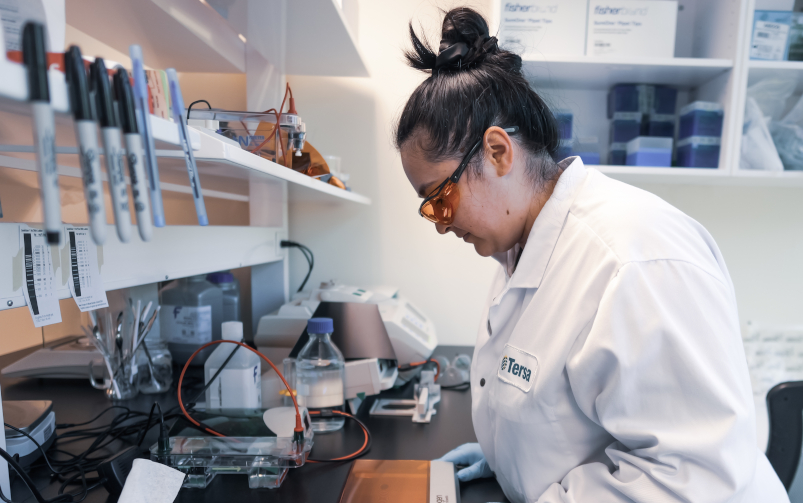What can economic reconciliation and a shared prosperity model look like in mining? For Taykwa Tagamou Nation (TTN) and Canada Nickel, it means investing in nation-building and developing Canada’s domestic critical minerals supply chain.
In May, Toronto-based miner Canada Nickel announced the closing of the $20 million convertible note with TTN. It is the largest known direct investment by a First Nation into a critical minerals project or company in Canada. According to Canada Nickel, the note gives TTN the right to convert into 16.67 million common shares, for $1.20 per share, a 7.9 per cent equity interest in Canada Nickel, as well as a seat on the company’s board of directors.
“Reconciliation isn’t just about acknowledgements, it’s about action,” Chief Bruce Archibald of TTN told CIM Magazine in a written statement. “Economic reconciliation means First Nations are not just consulted, but [are] co-owners and decision makers. This partnership represents a real shift towards that model [and] shows what’s possible when First Nations have both a voice and a stake.”
According to Canada Nickel, the Crawford nickel sulfide project—located just 42 kilometres north of Timmins, Ontario, and on the traditional territories of TTN—is the world’s second-largest nickel resource and reserve and is projected to be Canada’s largest nickel mine. The large-scale, open-pit mine and mill operation is expected to produce an average of 38,000 tonnes of nickel a year over the course of its 41-year mine life, according to a 2023 feasibility study.
The Ontario government recently identified the $3.5 billion capex project as a priority critical minerals and nation-building project. In the fall, Canada Nickel received a letter of intent from Export Development Canada for up to $500 million in long-term debt financing. It has also recently received nearly $20 million in private placements, including funding from Agnico Eagle and a separate US$20 million bridge loan.
Canada Nickel is on track to receive federal permits for Crawford by the end of 2025 and is aiming to begin production in late 2027 or early 2028.
Collaboration and co-development
According to Canada Nickel CEO and director Mark Selby, when TTN first approached the company with its interest in investing, the company considered a number of different options for TTN to invest its own capital. “We thought a convertible note was the best case,” he said. “It gives [TTN] equity exposure as if they owned equity, but it also provides them downside protection, as effectively it’s a debt instrument at the beginning, in that it gives them security over the land package. We thought this was a good risk-return trade-off.”
TTN has been involved with Canada Nickel since 2019 and has seen Crawford grow from an early-stage project to nearing mine construction. “From the outset, we saw a company that was willing to listen and collaborate, and not just check boxes,” Chief Archibald said. “We did not have conversations around typical ‘consultation’; we immediately were into deeper conversations about how we can collaborate through equity participation, infrastructure collaboration, shared governance and TTN’s visions for its nation.”
According to Sydney Oakes, director of Indigenous relations and public affairs at Canada Nickel, the connection between TTN and the company was mutual. “From the beginning, the relationship has been rooted in co-development, mutual respect and a shared vision for long-term, sustainable success—for both TTN’s generational wealth and our company’s operational growth,” Oakes told CIM Magazine. “[This] level of governance participation is a reflection of how far the relationship has come—from engagement to co-ownership and co-development.”
The relationship began with a transmission services agreement, where TTN committed to develop and operate a power line to supply electricity to the project, and later a haul fleet financing agreement, where TTN will finance all or a portion of the electric mining fleet for the project. Throughout these developments, TTN has also been working to move towards being self-sustaining through community-led development. The nation saw this investment as an opportunity to take a step closer to this vision with long-term and sustainable benefits.
“[The Crawford project] aligned with our values on clean energy, environmental responsibility and long-term economic growth,” Chief Archibald said. “This investment gives our nation a true seat at the table and a stake in shaping a 40-plus year project that will have lasting impact on our traditional territory.”
The investment also goes beyond the Crawford project to the company overall, meaning TTN will be able to partner with Canada Nickel in its downstream processing facilities, other exploration properties and future opportunities or projects, which is why TTN considered the board seat an essential component of the agreement. “It’s not enough to be involved, we need to be part of the decision making,” Chief Archibald said. “Canada Nickel understood that early on, and it became a core part of our discussions. Our seat ensures our values—from environmental stewardship to community well-being—are represented at the highest level.”
Mutual benefits
For Canada Nickel, the investment partnership means TTN is an equal contributor. “I think [the partnership] is taking economic reconciliation to that real natural place where First Nations are having a say and having a seat at the table in terms of how economic development occurs on their territory,” Selby said.
An added benefit for the company is that the investment partnership strengthens its social licence to operate and adds operational strength and local support to the Crawford project, particularly as TTN already plays a key role in its infrastructure. And according to Oakes, the board representation means that TTN will be able to contribute its deep knowledge of the land, a long-term perspective on sustainable development and a credible voice when engaging with governments and regulators.
“If we’re serious about shared ownership, we have to be serious about shared governance,” Oakes said. “It makes our projects stronger [and] more grounded, more collaborative and more aligned with the community’s needs and expectations.”
What makes the investment partnership unique for the mining industry is both the quantity and the scale of the investment, as well as TTN coming in at an earlier point in the project. “There have been other transactions where communities bought X per cent of assets that have been operating for 30 years,” Selby said. “This is coming at a different risk-reward point, where it does give a lot more upside potential to the First Nations community. And it’s also at a point in time where it’s very helpful for us in terms of being able to get through the final stages of permitting and get big investors to the table in terms of project partnerships.”
Both the leadership of TTN and Canada Nickel believe this partnership can serve as a model for other mining companies to go beyond consultation to economic reconciliation. Chief Archibald said companies should do more than just consultation and explore what equity, governance and shared planning can look like. “Economic reconciliation requires companies to be willing to give up some control and truly partner with First Nations,” he said. “It’s about long-term relationships, not short-term approvals.”
According to Selby, mining companies cannot develop this type of relationship and reach economic reconciliation overnight. It takes time to set the foundation of how companies approach their work on First Nations’ territories. “[If you] do it with a real spirit of partnership and openness to sharing the benefits, and if you start that as early as possible, then that gives you the time to build the relationship,” he said.




